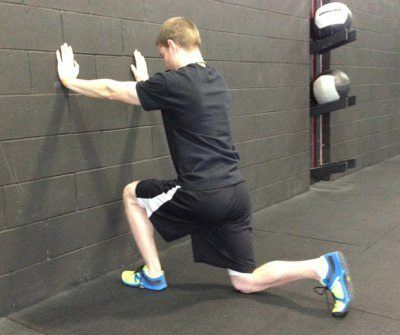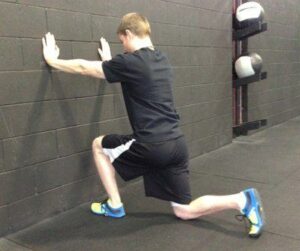
5 Reasons to Use “Fillers” in Your Strength and Conditioning Programs
One of the first things some individuals notice when they come to observe at Cressey Sports Performance is that we often pair “big bang” strength and power movements with lower intensity drills. This is also a common programming theme many of those who have completed my High Performance Handbook program have noticed.
As an example, we might pair a prone trap raise with a deadlift…
…or a hip mobility drill with a bench press.
We call these low-intensity inclusions “fillers.” Truthfully, though, I’m not sure that this name does them justice, as “filler” seems to imply a lack of importance. In reality, I think these drills have a profound impact on improving each client/athlete’s session. Here are five reasons why.
1. Fillers slow advanced athletes down on power and strength work.
Optimal training for strength and power mandates that athletes take ample time between sets to recharge. Unfortunately, a lot of athletes have a tendency to rush through this type of work because it doesn’t create the same kind of acute fatigue that you’d get from a set of higher-rep work. Muscular fatigue is a lot easier to perceive than neural fatigue. In other words, you’ll want to rest more after a set of six squats than you would after a set of six heidens, even if you were attempting to put maximal force into the ground on each rep with both.
By pairing the strength or power exercise with something a little more mellow, we “force” athletes to take adequate rest and get quality work in on subsequent sets of the “meat and potatoes.”
2. Fillers provide extra opportunities to work on basic movement competencies and corrective exercises.
If something is important, do it every day. For some people, this might be hip mobility work. For others, it might be some rotator cuff work. You might as well do it when you’d otherwise be standing around resting.
3. Fillers improve training economy – and may even allow you to shorten the warm-ups a bit.
This point is best illustrated with an example. Let’s say that I would normally do an 8-10 exercise dynamic flexibility warm-up before my lifting-specific work. Then, I’m warming up to a 600-pound deadlift like this:
135×8
225×5
315×3
405×3
455×1
495×1
545×1
585×1
600×1
On that warm-up progression, I have eight “between-set” breaks to get in a little extra work. Sure, I’m loading on plates, but that doesn’t mean I can’t bang out a few quick reps of ankle mobility or scapular control work. This can be pretty clutch – especially once I’m at the heavier warm-up sets that require a bit more rest – as it can actually allow me to shorten my earlier general warm-up period a bit.
When it comes to training economy, everyone wants to talk about exercise selection (picking multi-joint exercises) and finding ways to increase training density (more volume in a given amount of time). However, don’t forget that movement quality work is still “work.”
4. Fillers help to prevent “backups” in the training facility.
This is a double-edged sword. If you’re doing some hip mobility work between sets in a busy commercial gym, if you aren’t careful, it probably will increase your likelihood of someone stealing your squat rack.
However, in the collegiate, professional, and private sectors, incorporating fillers can be invaluable in preventing log jams where many athletes are trying to use the same piece of equipment at the same time. If you’ve got three athletes sharing the same trap bar, fillers can help things flow a bit smoother – particularly because it keeps less-than-attentive athletes from screwing around between sets.
5. Fillers may give deconditioned clients active recovery between sets to make the most of their time with you.
For some clients, the warm-up is the workout. In other words, they may be so deconditioned that even a set of the Spiderman with hip lift and overhead reach will get their heart rate up. If you paired this mobility drill with an inverted row, it might be a perfect fit for their fitness level. Conversely, if you paired that inverted row with a Bulgarian split squat, it might crush them. In this case, the filler is hardly a filler!
Fillers might have a connotation of “unimportant,” but that couldn’t be further from the truth. Try incorporating them in your programs to get higher quality work, improve training economy, and bring up weak links.



